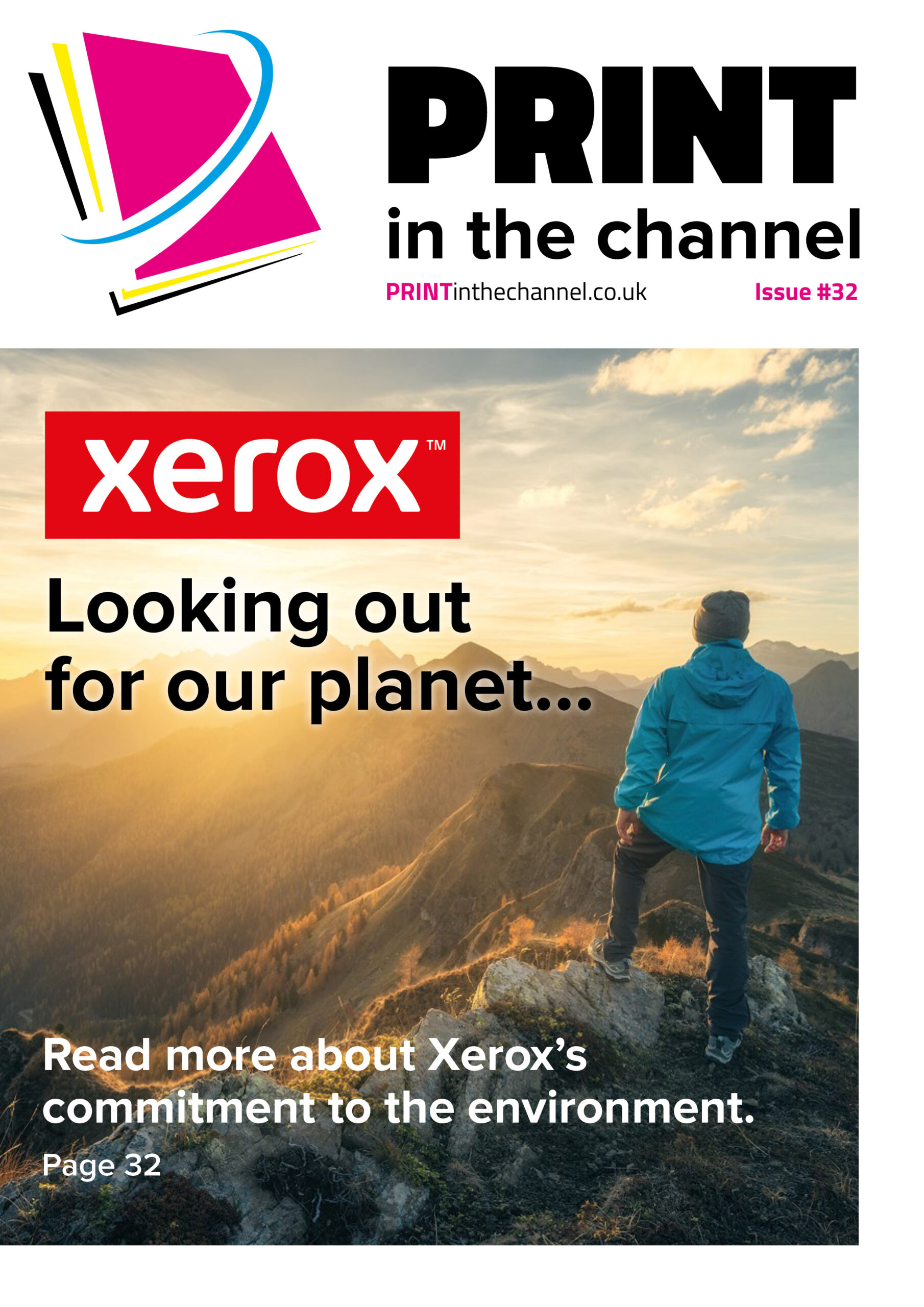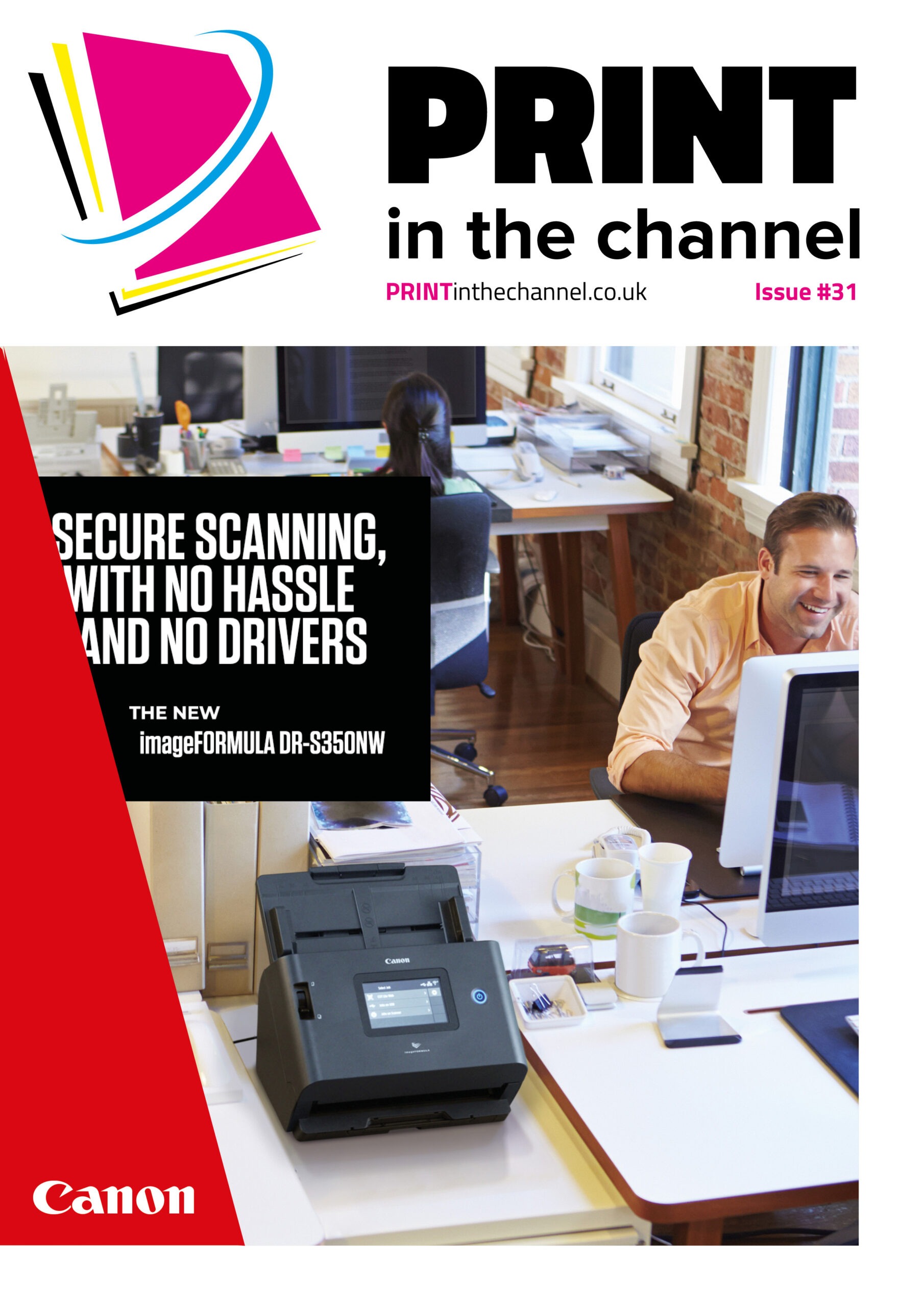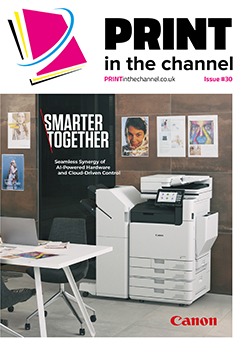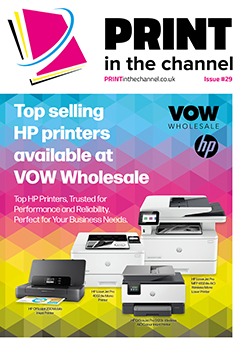As sustainability concerns continue to ascend the agenda of businesses large and small, the idea of the circular economy is becoming more important and this is something the print sector is responding to.
While sustainability has been a watchword for businesses across sectors for some years, customers now want more from their printers than just energy, ink and paper efficiency. Now, there is more of an emphasis on the entire lifecycle of a product and ensuring that as much of a printer is reused or recycled as possible.
“There is currently a global challenge to address the escalating threat of depleting natural resources,” says Wendi Latko, vice president environment, health, safety and sustainability at Xerox. “It’s important that we transform our consumption patterns to avoid outpacing the availability of new raw materials.
“Transitioning to a circular economy is instrumental to achieving this and we can help. Xerox has been at the forefront of the shift from a linear economy to circularity. Along with our goal to produce waste-free products in waste-free facilities, our aim is to design products, packaging and supplies that make efficient use of resources, minimise waste, reuse material where feasible and recycle what can’t be reused.”
Opportunities for savings
Nick Taylor, Epson’s head of sales for office print for UK and Ireland, agrees that contributing towards a circular economy is increasingly important to businesses of all sizes. “This model not only helps achieve a greener world but also presents opportunities for saving costs, innovating and meeting the growing expectation from customers and the general public for a more sustainability approach,” he says.
He points to research by Epson that indicates that 26% of consumers are willing to boycott brands perceived as ‘unsustainable.’ “This highlights the importance of sustainability in purchasing decisions,” he says.
“Ultimately, the economic and environmental benefits of adopting a circular economy are driving more businesses to minimise waste, optimise resource use and use sustainable practices to enhance brand reputation.”
Sophia Haywood-Atkinson, services director, UK at TD SYNNEX, adds that it isn’t just about the print sector. “The circular economy is vitally important to the whole IT industry and it’s already a key issue for customers,” she says. “Over the next few months, we will start to see many more organisations stipulating in ITTs that a certain ratio of new products must be remanufactured or refurbished. It won’t just be large enterprises that ask for this – SMBs will also want to purchase remanufactured products.”
Manufacturer response
Manufacturers in the print sector are already responding to the demand for more circularity in the design and use of their products.
Wendy says that Xerox designs for sustainability and enables a system where equipment, parts and supplies, returned at end of life, are used to generate raw materials for new products. “By doing so, waste is reduced and natural resources are conserved,” she says. “Designing for sustainability includes the careful selection of raw materials with an emphasis on the responsible use of reusable and recyclable materials, safety, adherence to ecolabel criteria and product lifecycle impacts.”
Nick adds that Epson products are made in Epson facilities, by Epson people, using Epson technology. “This gives us greater control of the product lifecycle from design, concept, and shipping, through to use, re-use and recycling,” he says.
“Customers can enjoy Epson’s circular economy practices through product longevity, for example through our extended business printer warranties and parts replacement programme – guaranteeing serviceable life for up to eight years – and heat-free inkjet technology, which offers significant reduction in CO2 emissions, consumables and user-intervention compared with equivalent laser technology. These heat-free benefits are critical to our customers, which is why Epson began construction of a new inkjet printhead production plant in June this year and completed the construction of another inkjet printhead production plant in December last year.
“Minimising our manufacturing footprint is also a hidden value that Epson places great effort into. At the beginning of this year, Epson successfully transitioned to 100% renewable electricity across all its group sites worldwide. We’ve taken a step further from this and have also started plans for a new biomass power plant in Japan to provide Epson with self-generated renewable electricity. This will not only reduce the ratio of electricity purchased from external power companies, but also promote the adoption of renewable electricity within our industry.”
Remanufacturing
Another aspect of the circular economy that is growing in popularity is remanufacturing of products. This is where the life and value of a printer is prolonged by rebuilding it from individual components – a mix of reused or repaired components and new parts.
Sophia says that all hardware vendors are looking at programmes that will provide business customers with remanufactured devices with full warranty cover. “For many for customers, that will make a huge difference,” she says.
“We expect to see significant growth in the market for remanufactured products over the coming year. We are already talking to several vendors about bringing their programmes to market and while the initial activity is likely to be focused on laptops, we’d expect other products – including printers and MFPs – to follow soon after.”
Wendy adds that remanufacturing is becoming more of a common practice among printer manufacturers. “Remanufactured equipment and supplies give customers an option to choose products with a lower environmental impact that meets the same performance, quality and reliability as new,” she says.
“Our internal studies have estimated remanufactured products result in CO2e savings of at least 90% during the raw material and manufacturing stages of the device lifecycle. As much as 1.3 tons of CO2 emissions savings vs. a new build device, the equivalent of 146 gallons of gasoline saved or C02 captured by 21 tree seedlings growing for 10 years, is realised over a five-year product lifecycle.”
Nick agrees that remanufacturing is becoming more common as customers value the extended product lifecycles and reduction of waste. “Of course, this is provided products are developed on the right foundation of quality to cater to this,” he says. “Remanufacturing involves building new products using a combination of new, repaired and spare parts that would otherwise be disposed of or repairing existing products using said parts. Epson’s environmental vision of becoming underground resource free by 2050 is a key foundation for us in taking responsibility for this circular economy practice, not to mention the sustainability advantages it will offer our customers.”
Reseller conversations
When talking to customers, there are certain benefits of using printers designed with the circular economy in mind that resellers should emphasise.
“There are environmental, societal and economic benefits of a circular economy,” says Wendy. “It is a way of using resources more efficiently and reducing waste. For example, circularity helps conserve natural resources, lowers energy use and greenhouse gas emissions, saves costs for manufacturers and customers, creates jobs and opportunities, and improves health and wellbeing.
“A circular economy also supports the United Nations Sustainable Development Goals that aim to end poverty, protect the planet and ensure peace and prosperity for all.”
Nick adds that resellers should emphasise the energy efficiency, low waste and low intervention of heat-free technologies available on the market. “But more than this, they should challenge customers to choose facts and data when opting for anything labelled as ‘sustainable’,” he says.
“We’ve eradicated the ambiguity of this with our heat-free inkjet printers through the optimisation report, which calculates the energy, waste, CO2 emissions, time and cost saved when switching to heat-free inkjet from equivalent laser devices. And to ensure impartiality, this is all measured using data collected by independent assessor DataMaster Lab.”
Trends
The trend for customers being more aware of the circular economy in print solutions is set to grow in the coming months and years. “Current trends indicate a growing demand for balancing print deployments in the office to ensure optimised usage and minimal waste,” says Nick.
“The new deployment of print has been aggressively shaped and moulded through years of changing post-pandemic work environments, and its key for resellers to be able to offer the full breadth of print and scan speeds, functionality and size to tailor solutions for their clients, not limit clients to ‘what’s available’. If they can achieve all of this while offering customers savings on energy, waste and user-intervention, then they’ll be difficult to rival.”
Wendy adds that resellers should look to provide visibility of carbon footprint and energy consumption to support customers with their reporting requirements and achieve their sustainability goals, with analytical dashboard solutions such as Xerox MPS Advanced Analytics.
“There is also a strong pull towards sustainability in tenders and RFIs with criteria becoming more heavily weighted, including products with third party ecolabel certifications such as EPEAT, Energy Star and Blue Angel,” she adds.
She adds that there is also a preference for third party certification to evidence external certified quality control of the process to deliver no compromise performance and capabilities and distinguish from a basic dust off certification, which may not provide the same user experience and peace of mind.
“[For instance] Xerox Certified Pre-Owned device customers benefit from the total ecosystem experience including Xerox technology, MPS, workplace cloud, software, visibility, security and service,” she says.
Sophia adds that, in time, TD SYNNEX expect the circular economy will become a part of every product lifecycle. “It’s going to be a huge opportunity for partners and one that we are ready to help them take,” she says.










